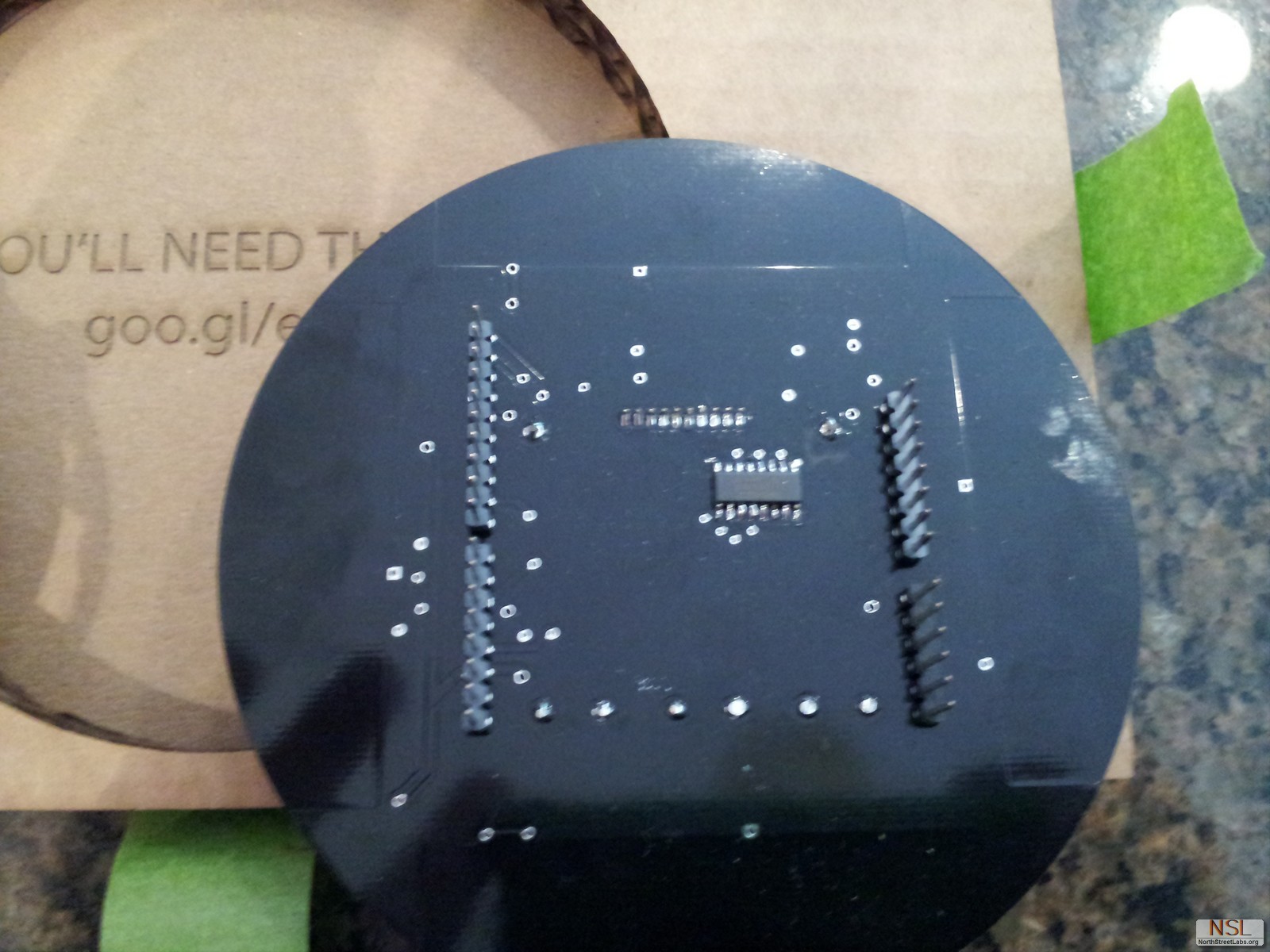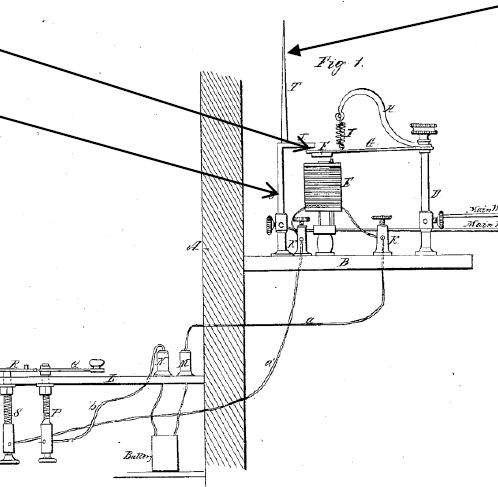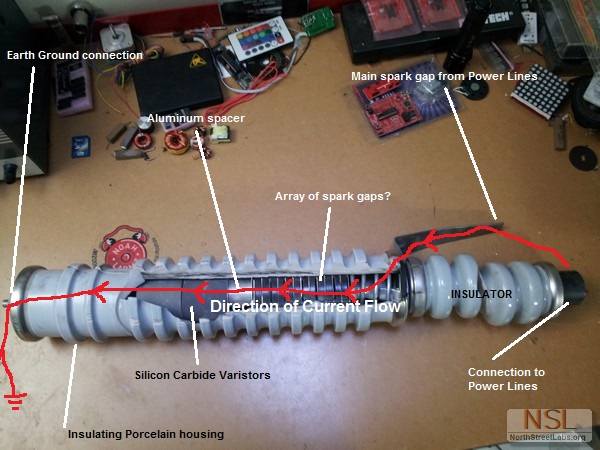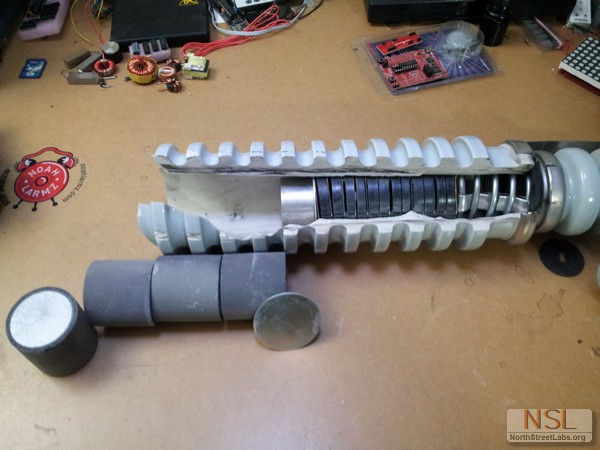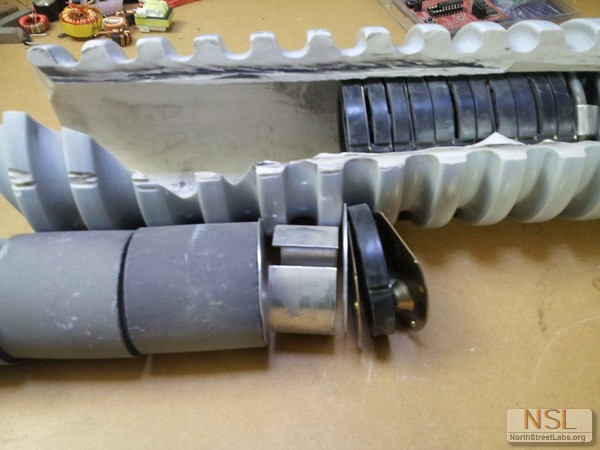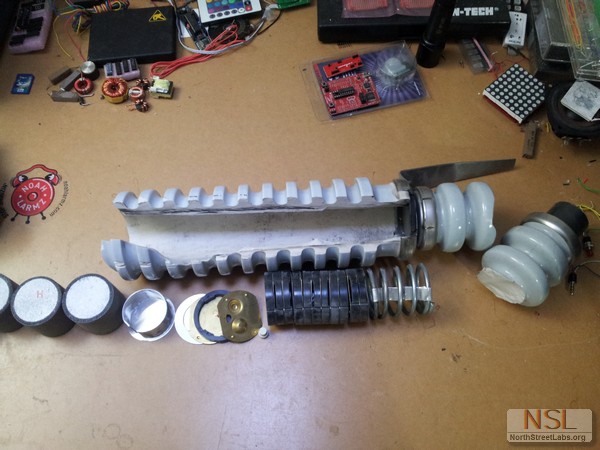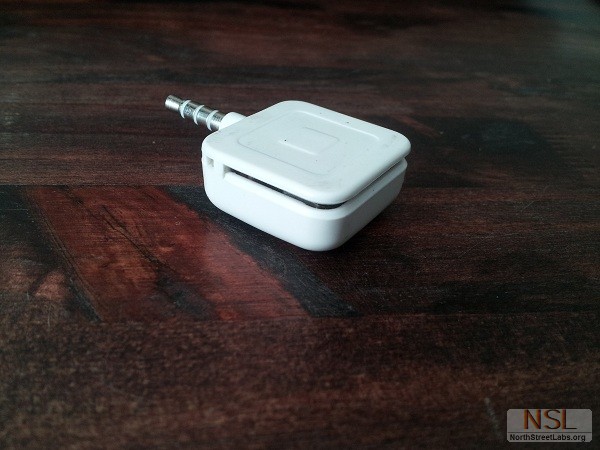Bullduino?!
This is what the Bullduino was wrapped inside, laser cut cardboard sheets. And “SHALL WE PLAY A GAME?” teasingly printed on the top of the box.
The Bullduino appears to be an Arduino clone, there is an ATMEGA328AU IC and an ATMEGA8U on the main board, very similar to the Arduino UNO. The link included in the back of the box is a direct download link to the Bullduino.INF, a file for recognizing the board on Windows COM ports. The main Bullduino board seen here:
The board comes attached to a “shield” that appears to be a Touch-controlled Simon Game! It has Red, Green, Blue, and Orange LEDs for the four corners, 3 piezo speakers, a 2×16 graphical LCD character display, two buttons, and four capacitive touch pads – one for each color LED.
Upon plugging the Bullduino into a computer port, it will power up the SimonShield v1.0 (Name found on Arduino IDE serial monitor while running) which turns on the four LEDs long enough to blind/disorient you. Then the screen displays a short message:
Then the green LED on the left will blink and a speaker will beep at the same time. This is the hint. Touch any of the four pads and the corresponding LED will light and beep. Then playing the pads as asked, green, red, blue, red, orange – all of a sudden all the LEDs blink, the LCD screen displays a message and music plays through the three piezo speakers:
You’ve been Rick rolled by the Bullduino! We didn’t see it coming, a fund surprise! There may be more surprises and/or hidden stuff such as the Morse code that Hartford Hackerspace found. We will update this as soon as we have more information.






